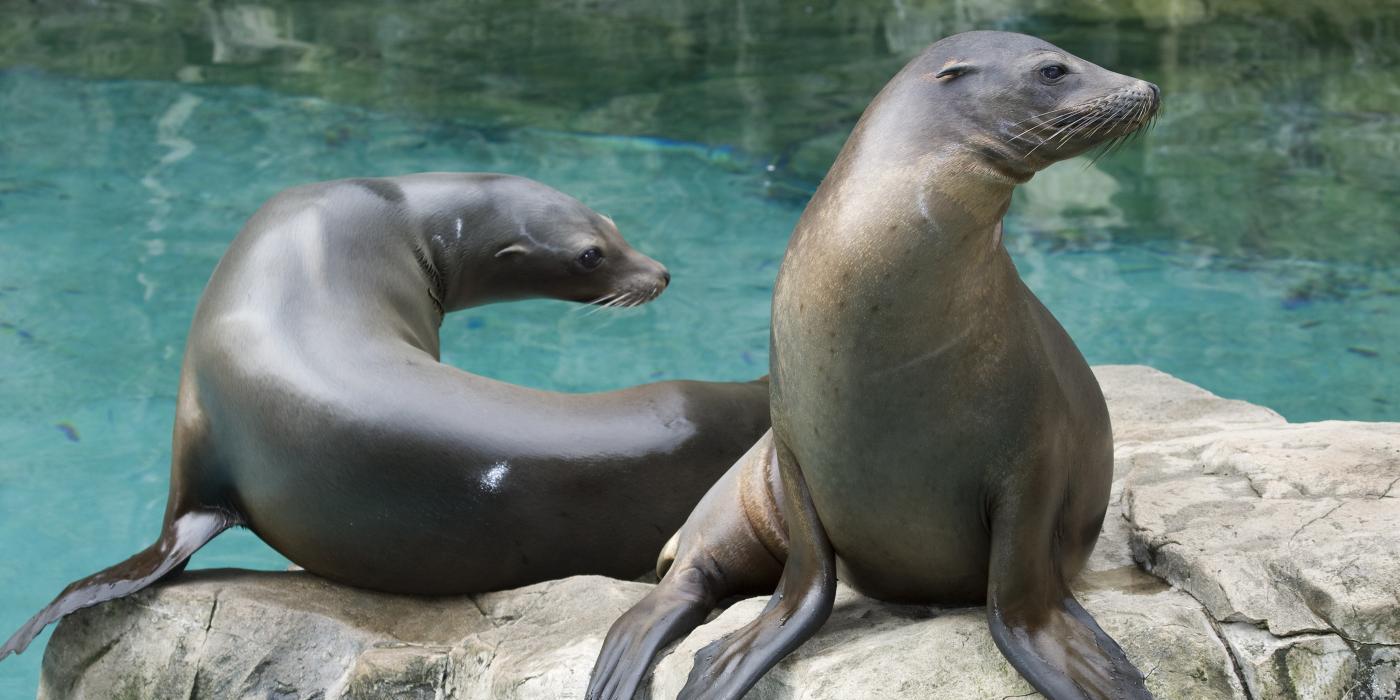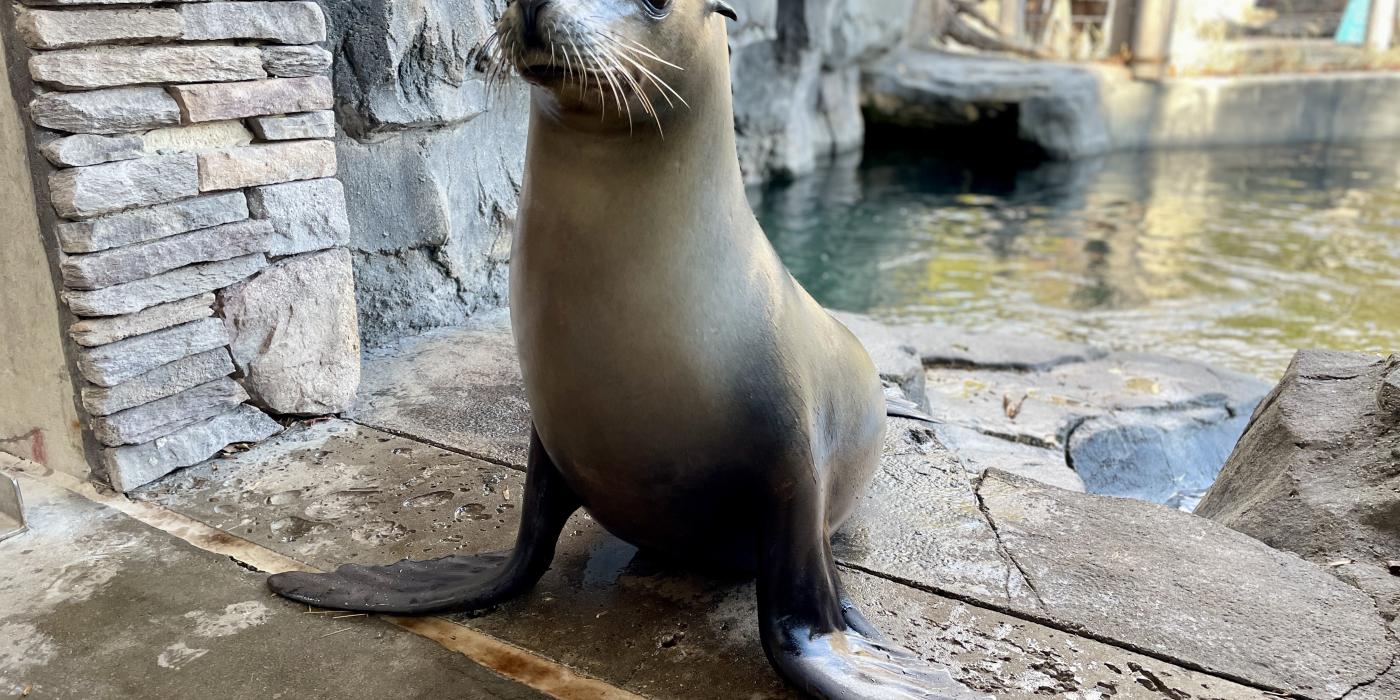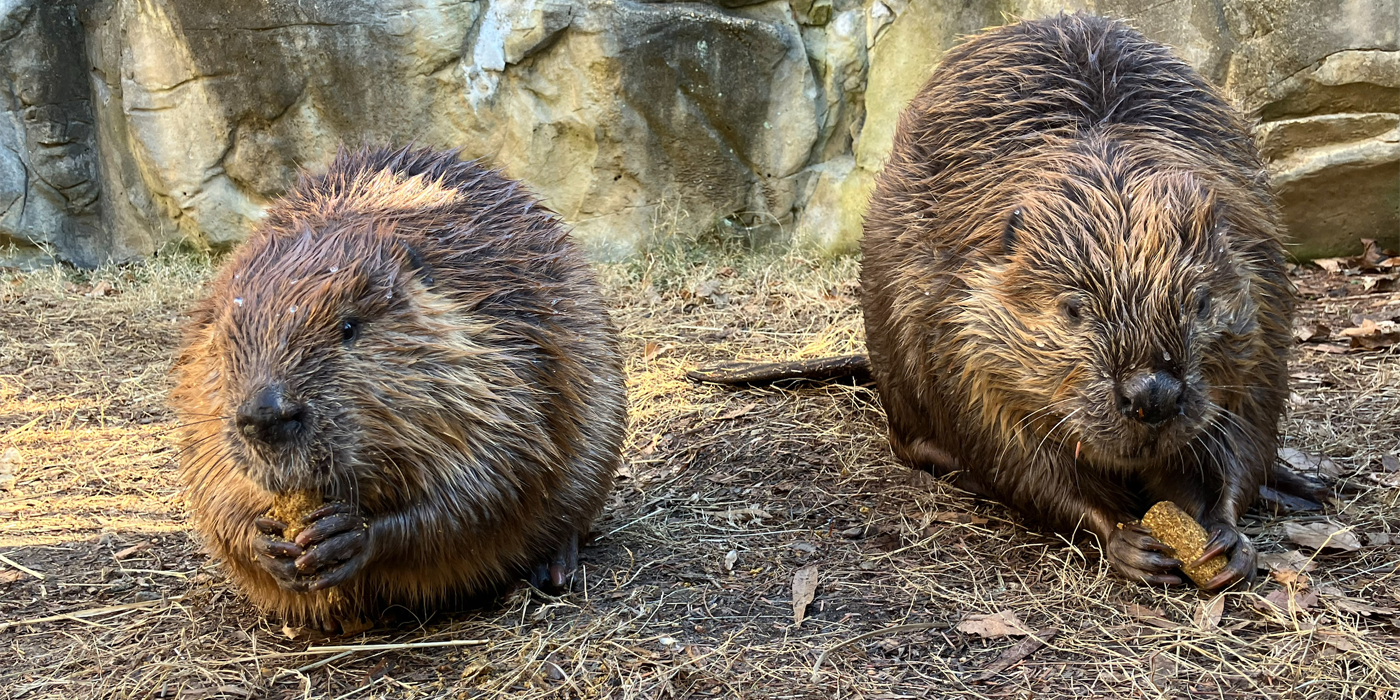8 Facts to Celebrate International Beaver Day
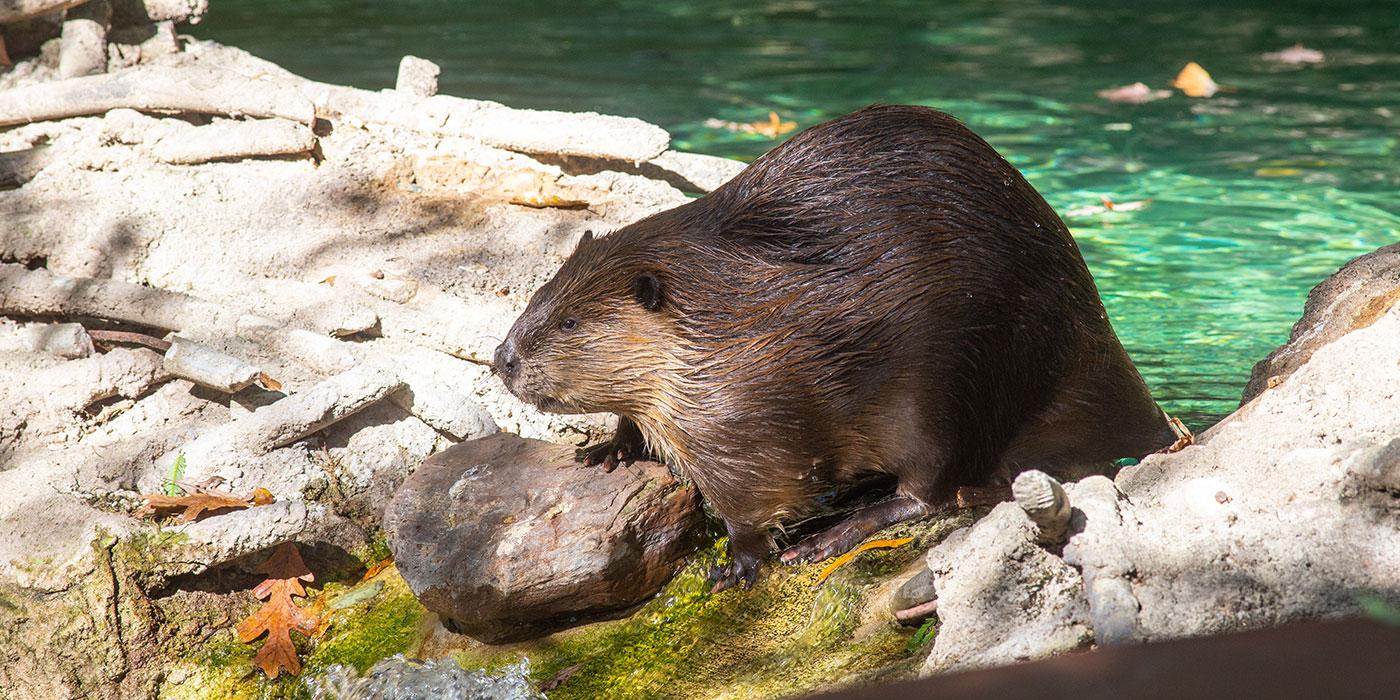
April 7 is International Beaver Day, so sink your (orange) teeth into these fun beaver facts!
1. Beaver teeth are orange.
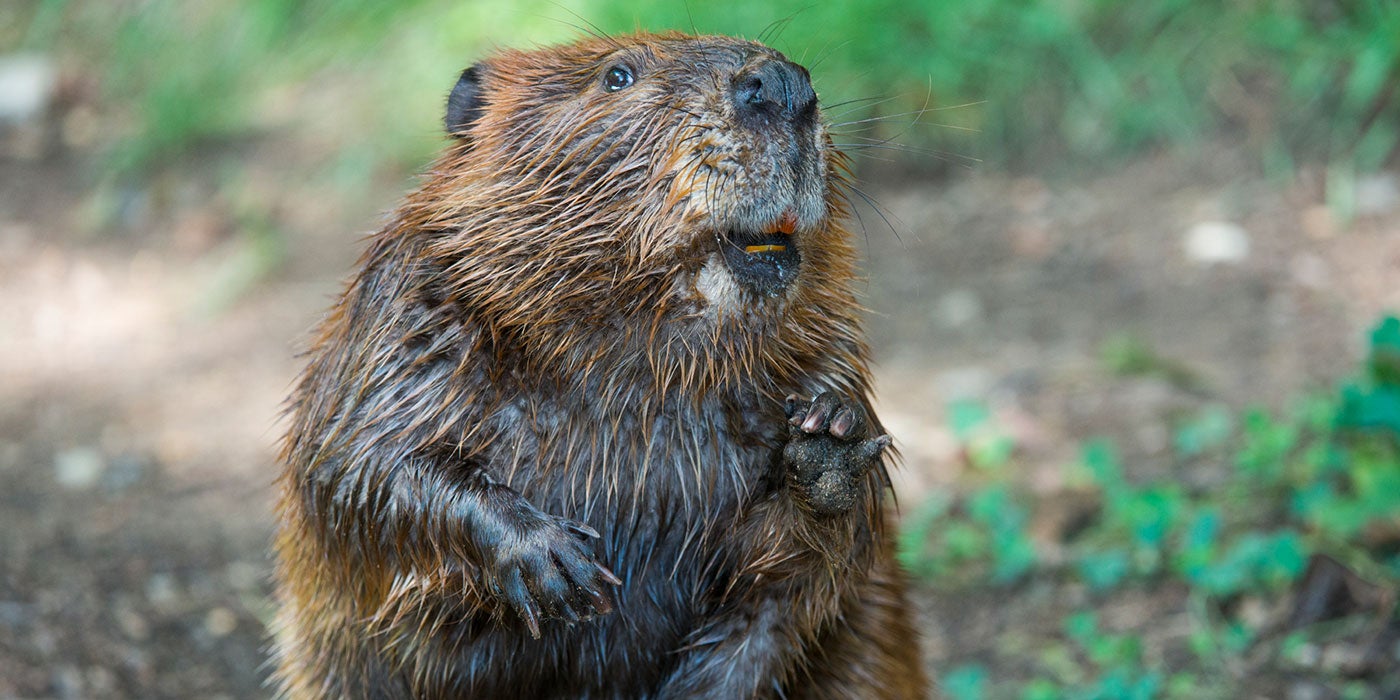
Beavers have long incisors that get their orange color from an iron-rich protective coating of enamel. Their teeth grow continuously throughout their life, but daily use helps trim them down.
Because the softer dentine (bony tissue that forms a tooth) wears away faster than the enamel, a beaver’s teeth wear down unevenly. This gives the incisors a chiseled shape, which helps beavers cut through hard objects like wood.
2. Beavers are one of the few animals that modify their habitat.
Beavers build watertight dams made of woven sticks, reeds, branches and saplings caulked together with mud and rocks.
The dams form slow-moving ponds that reduce stream erosion and provide brand new habitat for small fish and other aquatic wildlife. Rocks make up a large part of dams. Beavers at the Smithsonian’s National Zoo can even be spotted moving rocks around their habitat.
3. Beavers don’t just build dams. They also build lodges.
These dome-like lodges are often constructed away from the shore, forming islands that can only be entered from the water. A lodge can have multiple underwater entrances, with living quarters located in the top above the water line.
The walls are typically insulated, and a small air hole in the roof provides ventilation. The floor of a beaver’s lodge is often covered in wood shavings to absorb moisture and provide a comfortable place to sleep.
4. Beavers slap their tails on the water to indicate danger.
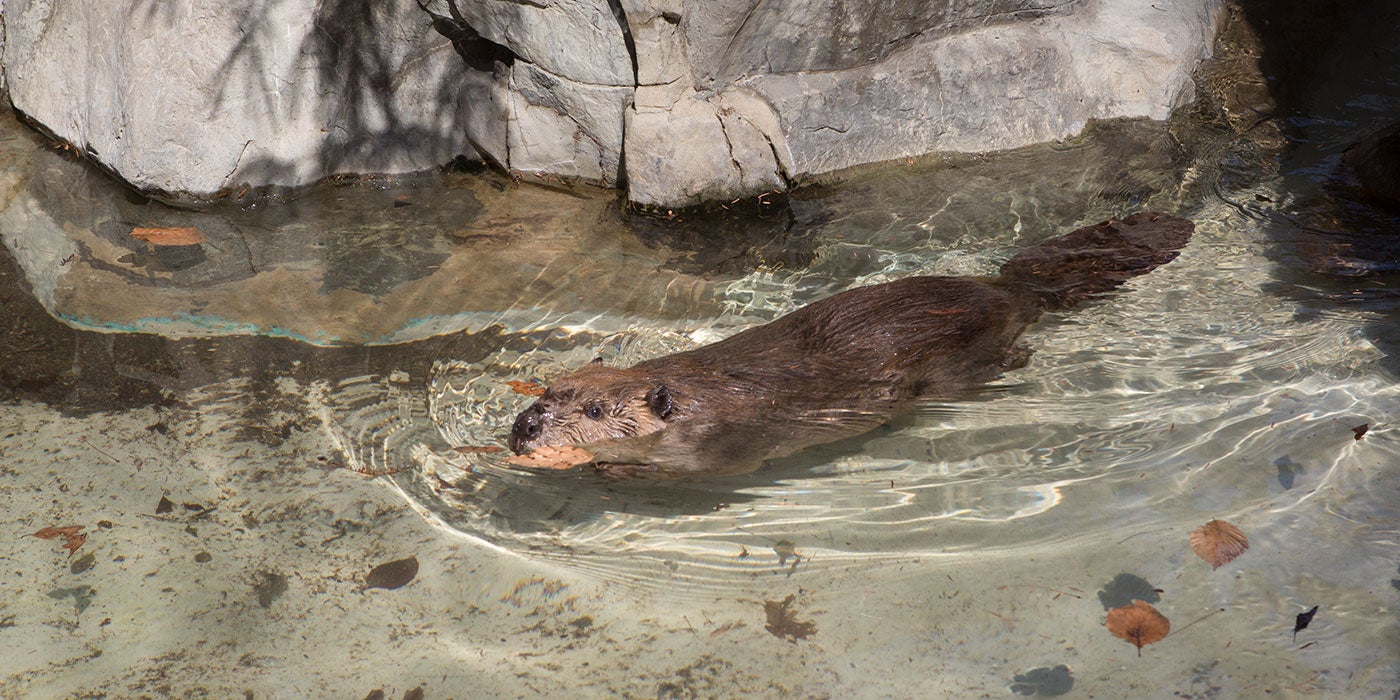
Beavers communicate using scents, vocalizations and posturing, but one of their most important signals is the tail slap. Typically performed by an adult, this loud alarm signal alerts others to seek refuge in deep water and may even frighten a potential predator away.
5. Beavers eat wood!
That’s right. Beavers sometimes snack on tree bark or the softer layers of wood underneath.
These herbivores also eat leaves, woody stems and aquatic plants. Some of their favorite foods – poplar, aspen, willow, birch and maple – are also (conveniently) their primary building materials.
Beavers also store branches on the muddy pond floor beneath their lodges to eat during the winter when they spend most of their time inside. The cool water acts like a fridge, keeping the stems fresh and preserving their nutrients.
Bonus: Beavers are very dexterous and tend to hold their food between their front paws to eat.
6. Beavers are the largest rodents in North America.
There are two living species of beaver: the North American beaver and the Eurasian beaver. North American beavers typically weigh between 35 and 65 pounds and are 3-4 feet long (standing 1-1.5 feet tall). The Eurasian beaver is slightly smaller than its North American cousin.
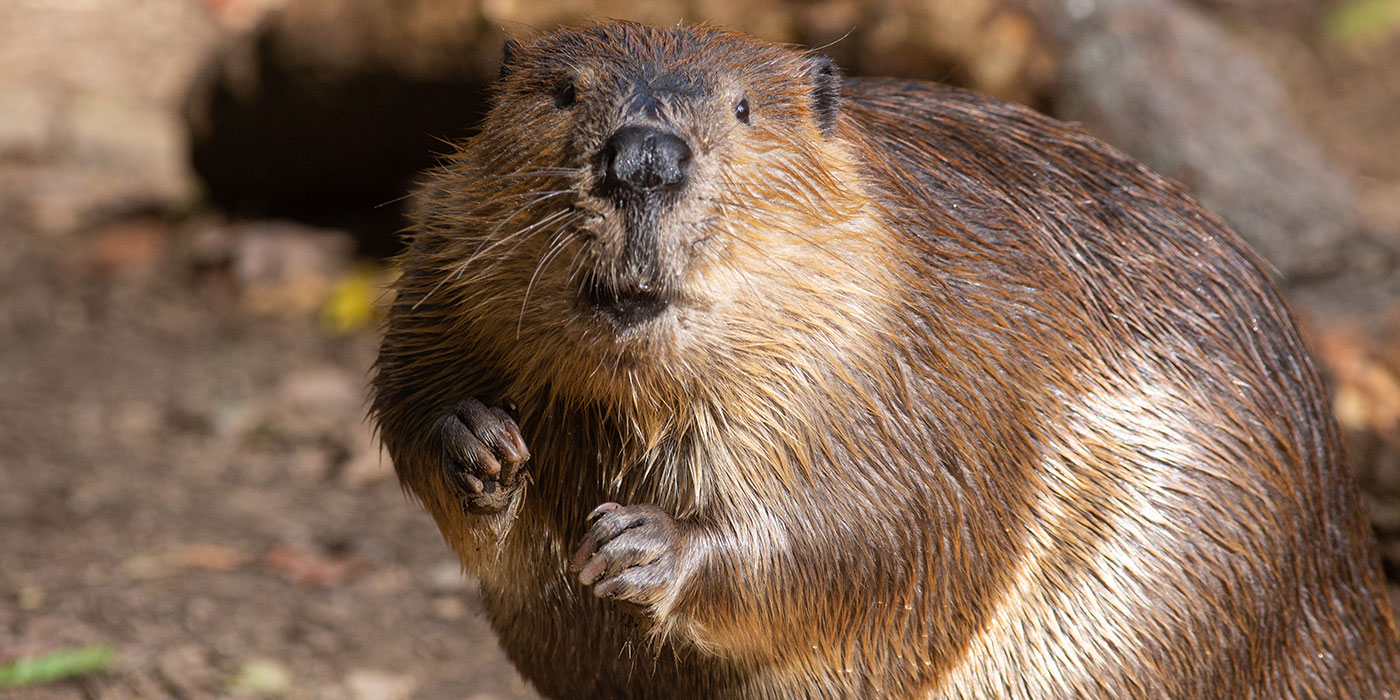
The North American beaver would be the largest rodent in the world if not for the capybara, a South American mammal that claims the heavyweight title.
7. A beaver’s activity is not synchronized with the typical solar day.
Light levels in a beaver’s lodge and underwater remain consistently low throughout a 24-hour day. Without cues from the sun, a beaver’s circadian rhythm, or regular day cycle, changes. Its “days” become longer, often varying in length from 26-29 hours. Beavers are primarily nocturnal and tend to be most active at night.
8. Beavers can stay underwater for about 6-8 minutes.
Large lungs allow beavers to stay submerged for an extended period of time. Though their movement may be awkward on land, webbed hind feet and rudder-like tails help them move swiftly through the water, where they can swim up to 6 mph.
Stop by American Trail to see beavers during your next trip to the Smithsonian’s National Zoo!
Related Species:

